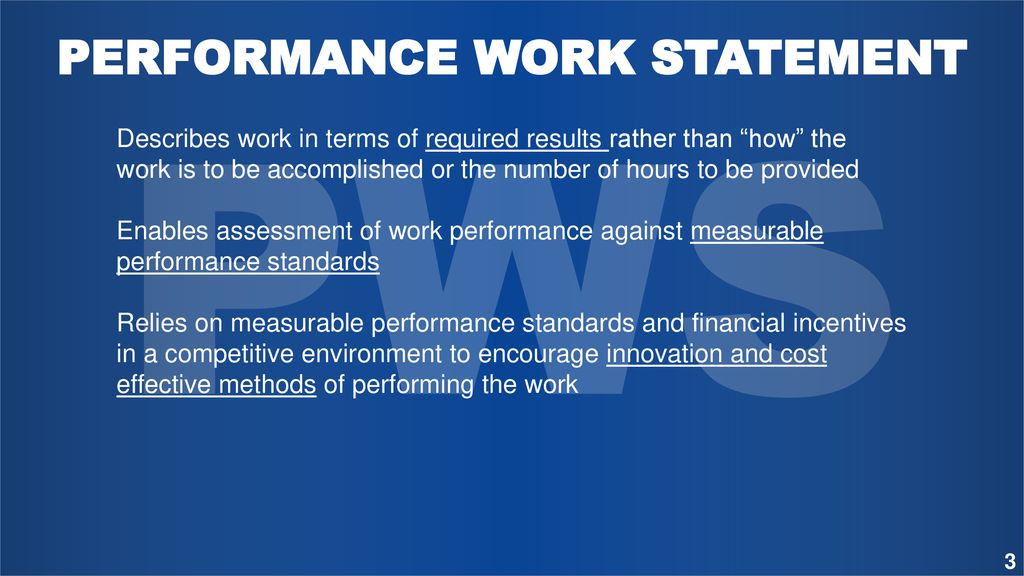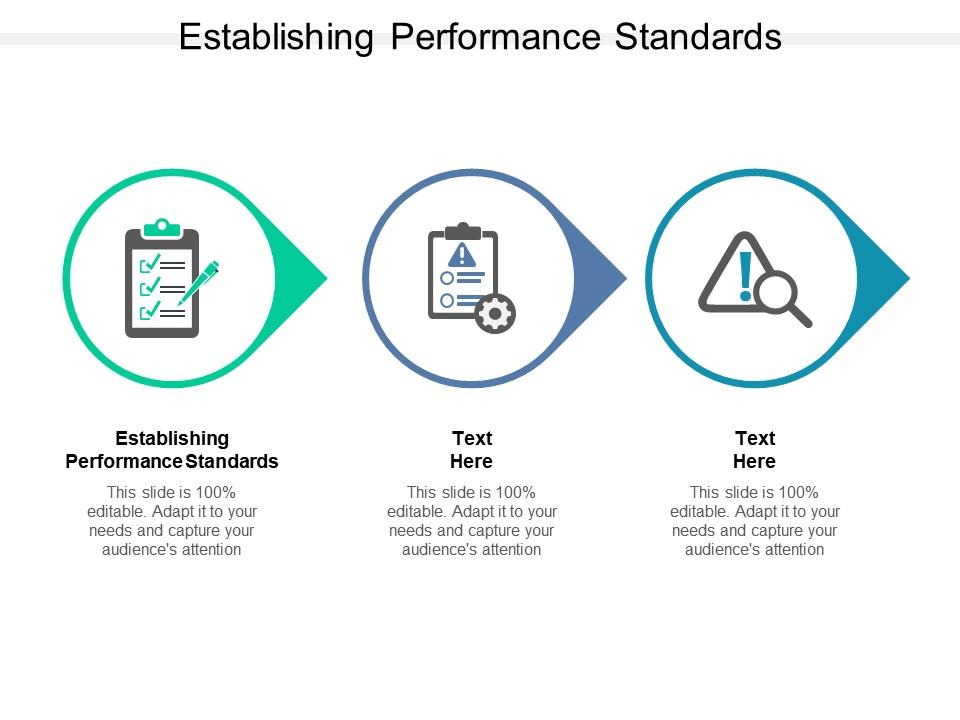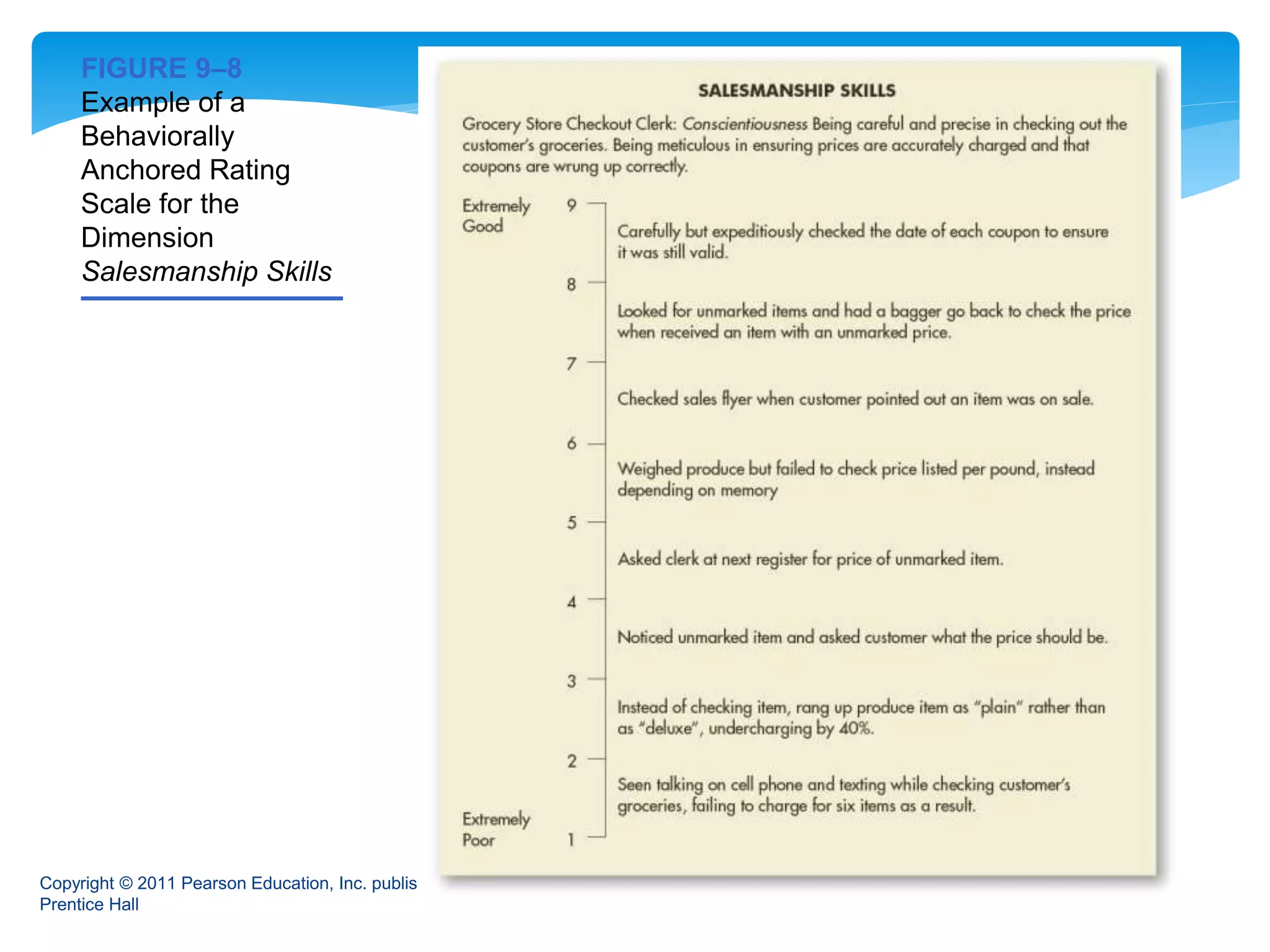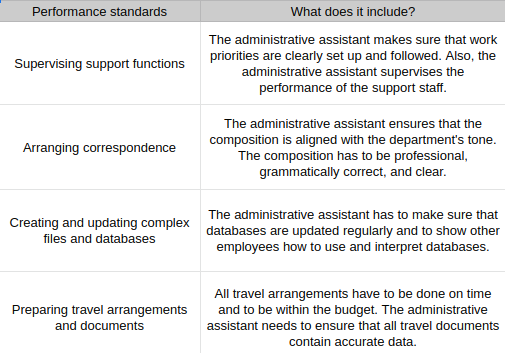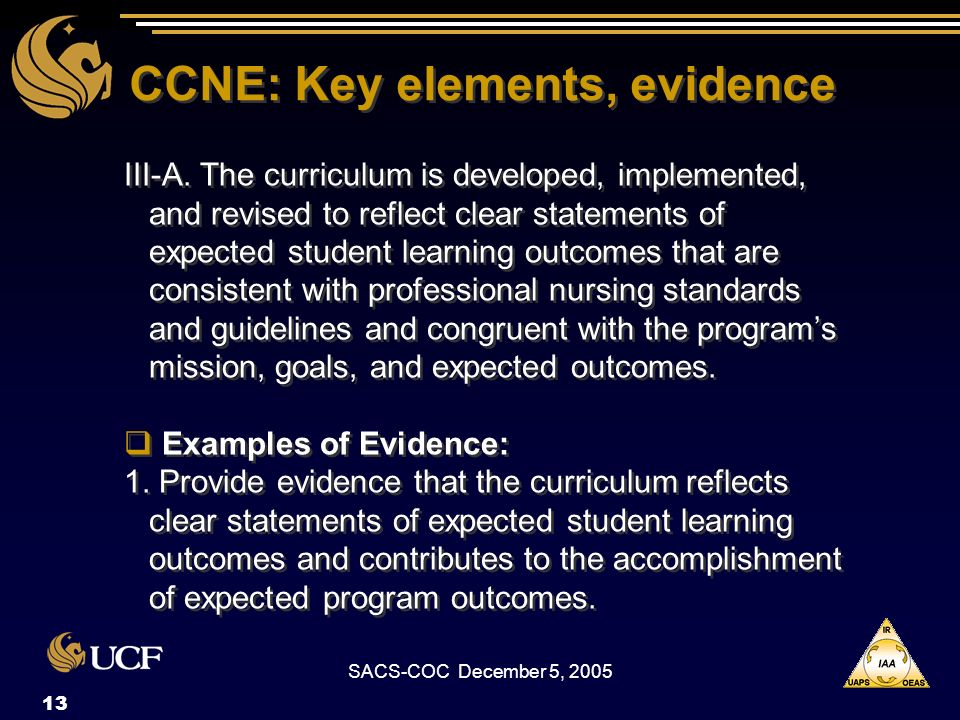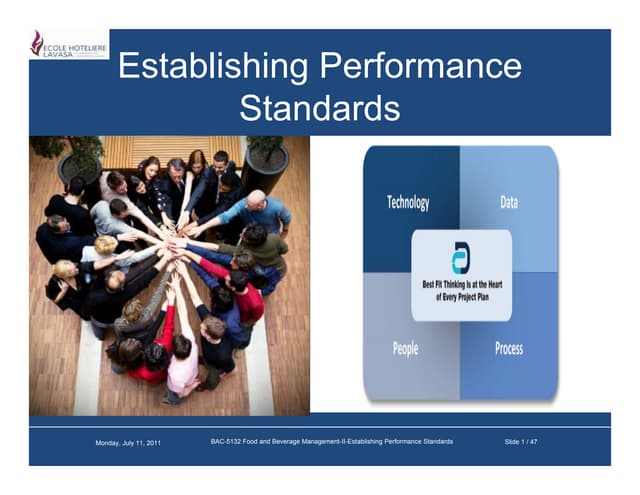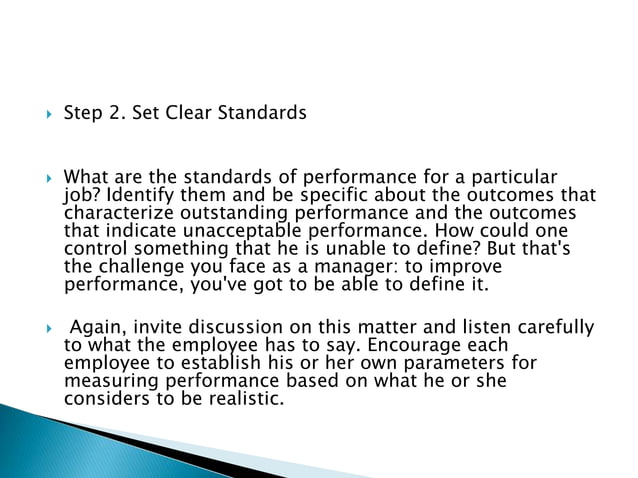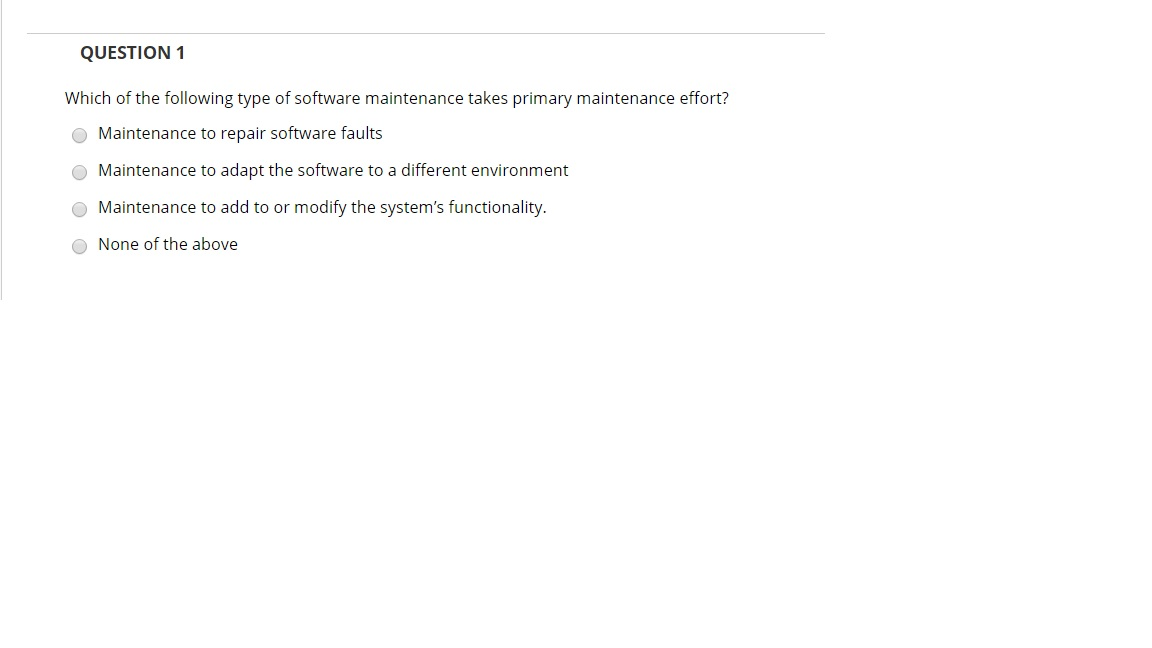Which Statement Reflects A Clear Performance Standard

Urgent calls for clarity are echoing across various sectors as organizations grapple with defining effective performance standards. The lack of precise benchmarks is hindering productivity and fostering ambiguity.
The issue revolves around identifying statements that explicitly outline measurable and achievable expectations for employees. This lack of clarity leads to inconsistencies in evaluations and impedes professional growth.
The Core of the Problem: Defining "Clear"
What exactly constitutes a "clear performance standard"? It's a question plaguing human resources departments nationwide. The standard must be specific, measurable, achievable, relevant, and time-bound (SMART).
Examples of unclear standards include "Improve customer satisfaction" or "Be a team player." These vague objectives lack quantifiable metrics and leave room for subjective interpretation.
Conversely, a clear standard might be: "Increase customer satisfaction scores by 15% within the next quarter, as measured by post-service surveys." This example provides a specific goal, a measurable metric, a timeframe, and a clear path to evaluation.
The Impact: Productivity and Morale
The absence of clear standards breeds frustration and disengagement. Employees are often left guessing at what is expected, leading to inconsistent performance. According to a recent Gallup poll, only 50% of employees strongly agree that they know what is expected of them at work.
This ambiguity translates directly into decreased productivity and higher turnover rates. When employees don't understand expectations, they are less likely to meet them.Clear performance standards are therefore vital for organizational success.
Furthermore, ambiguous standards can create an environment of perceived unfairness. Employees who are evaluated based on subjective criteria may feel that they are being judged unfairly. This can lead to resentment and decreased morale.
Case Studies: Success and Failure
Company A, a technology firm, implemented a new performance management system with clearly defined standards. They saw a 20% increase in employee productivity within six months. The key was linking individual goals to broader company objectives.
On the other hand, Organization B, a non-profit, continues to struggle with vague performance expectations. Their employee engagement scores remain low, and they are experiencing high staff turnover. Their inability to define clear metrics is hindering progress.
These examples highlight the critical role of clear communication in performance management. Without it, organizations are setting themselves up for failure.
Who is Affected?
The issue of unclear performance standards affects everyone from entry-level employees to senior management. Frontline workers may struggle to understand their daily tasks. Managers may find it difficult to provide effective feedback.
HR departments bear a significant responsibility in establishing and communicating these standards. They must ensure that performance expectations are aligned with organizational goals and that employees are adequately trained to meet them.
Ultimately, the responsibility for clarifying performance standards rests with leadership. They must champion the importance of clear communication and ensure that all employees understand what is expected of them.
The "How": Implementation Strategies
Implementing clear performance standards requires a multi-faceted approach. This includes defining specific, measurable goals, providing regular feedback, and offering opportunities for professional development.
Performance reviews should be based on objective data, not subjective opinions. This ensures fairness and provides employees with concrete areas for improvement. Regular feedback sessions are essential to keep employees on track.
Training programs can help employees develop the skills and knowledge needed to meet performance expectations. Investing in employee development is a key factor in creating a high-performing workforce.
Next Steps: Action Required
Organizations must prioritize the development and implementation of clear performance standards. This requires a commitment from leadership and a willingness to invest in employee training and development.
HR departments should conduct audits of existing performance management systems to identify areas for improvement. They should also seek feedback from employees on the clarity and effectiveness of performance expectations.
Ongoing monitoring and evaluation are essential to ensure that performance standards remain relevant and effective. The situation demands immediate action from all stakeholders.


